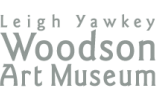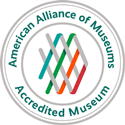Last fall I led a bus trip to southern Wisconsin for Museum members to experience museums, historic sites, theater, and fine dining. Our first stop on this three-day trip was the Aldo Leopold Shack and the Leopold Center Green Building near Baraboo.
We arrived on a beautiful fall day in October. After a short bus trip from the Leopold Center, we pulled up to a path that led through a field of wild flowers surrounded by pine trees planted by Leopold and his family in the 1930s and 40s. Beyond the path, nestled in the pines, was the “shack” where the Leopold family stayed on weekends and school breaks as they worked to bring back the land of a depleted worn-out farm.
Our guide shared stories of the Leopold family and introduced the group to A Sand County Almanac, the collection of essays written by Aldo Leopold that examines our perception and use of the land we live on and our relationship with the natural world. His essays express a reverence and respect for nature and have endured as one of the first publications to encourage a land ethic.
Today, Leopold is recognized as an important figure in the development and understanding of ecological awareness. On Sunday, the Woodson Art Museum proudly presented Green Fire, a full-length documentary film about Leopold and his ideas. The film was introduced by Stan Temple, a senior fellow and science advisor to the Aldo Leopold Foundation and professor emeritus of forestry, wildlife ecology, and environmental studies at UW- Madison. In fact, Stan occupied the same wildlife ecology professorial “chair” as Aldo Leopold; an impressive continuum.
Leopold’s legacy lives on in his many publications, the Aldo Leopold Foundation, and now through Green Fire. He truly is a Wisconsin treasure.









